Shark Week Has Extra Bite for Long Islanders Fearing More Attacks
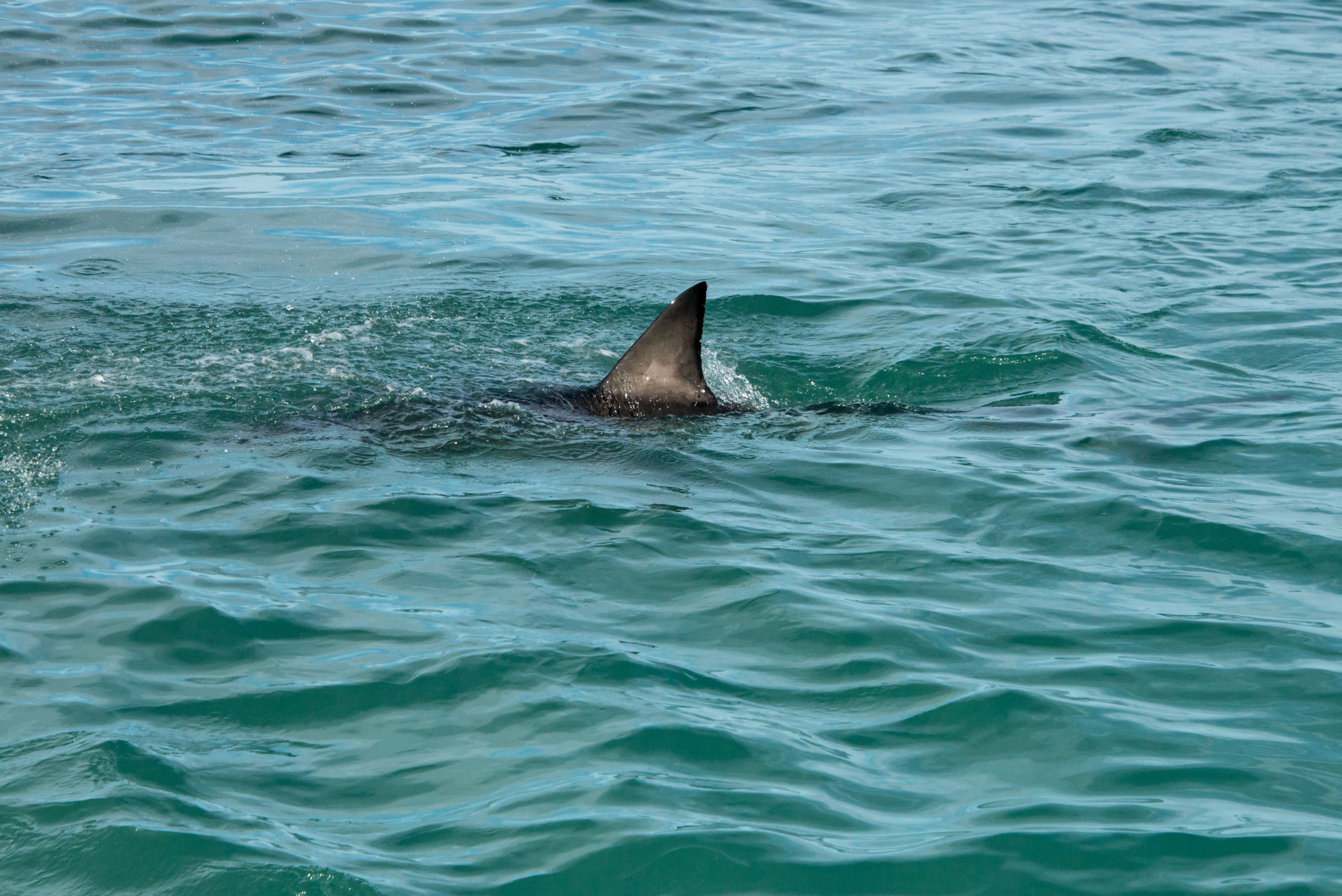
Tensions remain high at Hamptons beaches this week after a spate of shark attacks and sightings on Long Island, including a dead great white washing up on a beach right here in Quogue, have captured headlines and the community’s collective imagination.
Sharks have been known to cause irrational panic over the years, but in this case, there is at least some cause for alarm. Add the Discovery Channel’s annual “Shark Week” blitz of terrifying footage hitting televisions and social media this week, from July 24–30, and a perfect storm of fear is now casting an ominous thundercloud over many beachgoers’ usual carefree fun in the South Fork sun.
On a positive note, none of the victims have suffered serious injury or death, and this increased prevalence of shark attacks and sightings offers evidence that conservation efforts and better stewardship of our oceans are working to bring these magnificent creatures back after years of overfishing.
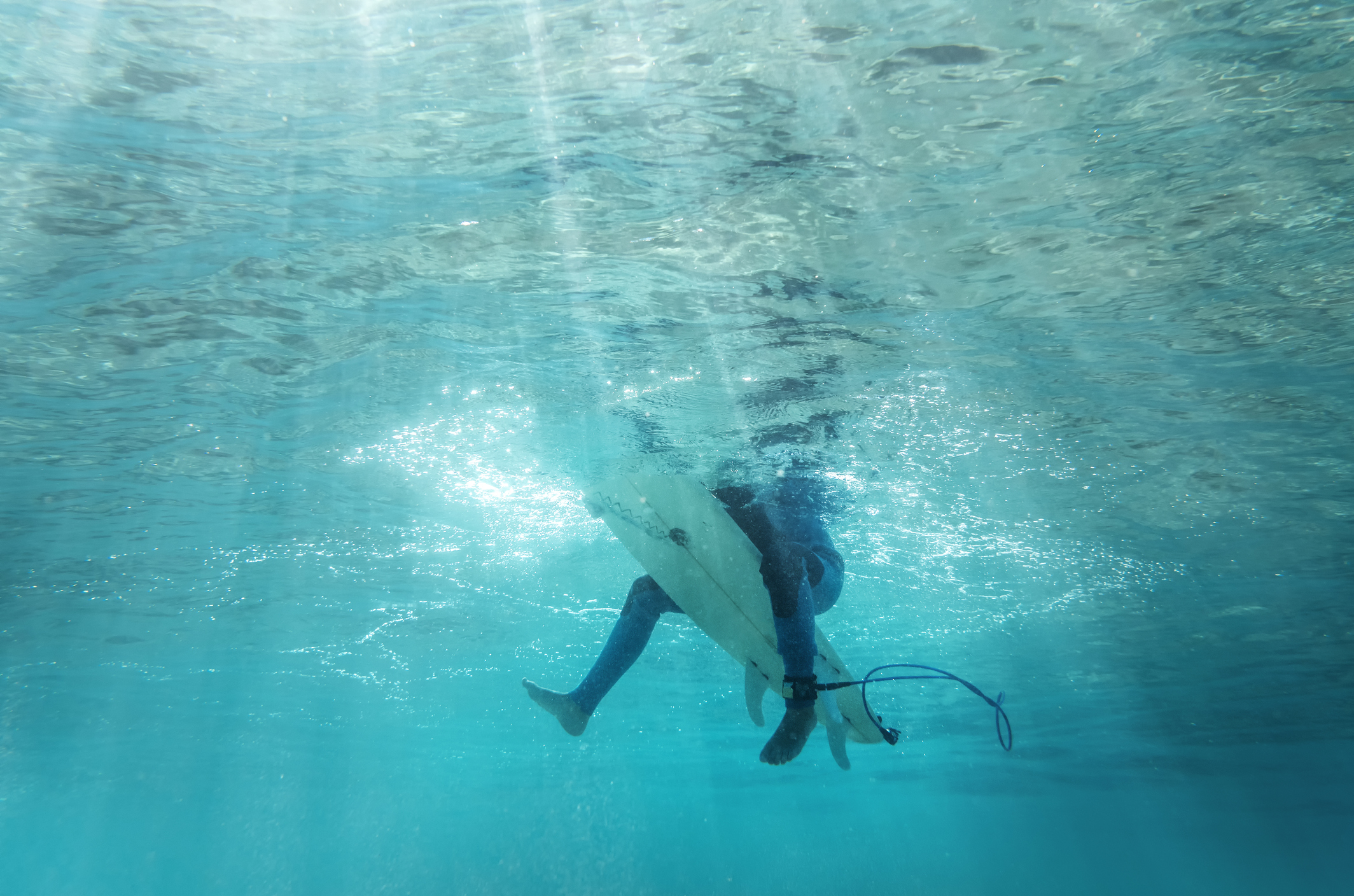
SHARK ATTACKS
Six shark attacks were reported in Long Island waters over three weeks this summer.
July alone saw five attacks, all on Fire Island. A lifeguard was bitten on the hand and chest during a training exercise at Smith Point Beach in Shirley on July 3. An Ocean Beach Village lifeguard was bit on his foot on July 7, also during a training exercise, and a Smith Point surfer who was bitten on his calf on July 13.
A tourist from landlocked Arizona was bitten on his butt and wrist in waist-deep water on July 13 at Seaview Beach. And, most recently, a teen surfer was bitten at Kismet Beach on July 20, just hours after the Quogue great white made national news approximately 30 miles to the east.
The first possible attack of summer occurred on June 30 when a man received a wound on his leg, presumably from a shark, at Jones Beach in Wantagh.
And people continue to report shark sightings on beaches across Long Island.
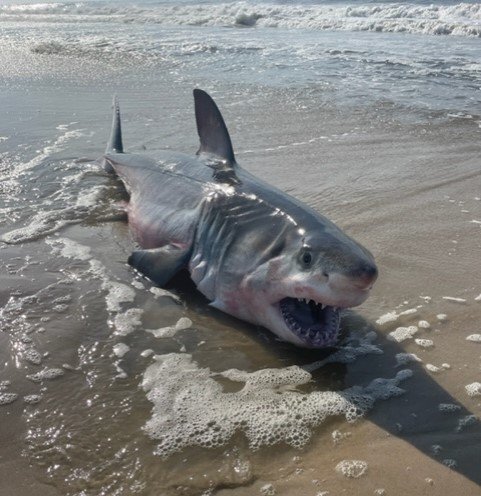
A GREAT WHITE SHARK IN QUOGUE
This scary shark narrative was dumped directly onto the Hamptons’ sandy doorstep when Quogue Village police responded to what was clearly identifiable as a juvenile great white, of Jaws fame, on the beach between 80 and 90 Dune Road in Quogue last Wednesday morning, July 20.
Officers managed to photograph the shark carcass, which was reportedly 7–8 feet long, before it washed back out to sea, and those images have now injected the world’s most feared marine predator into the broader conversation throughout Long Island.
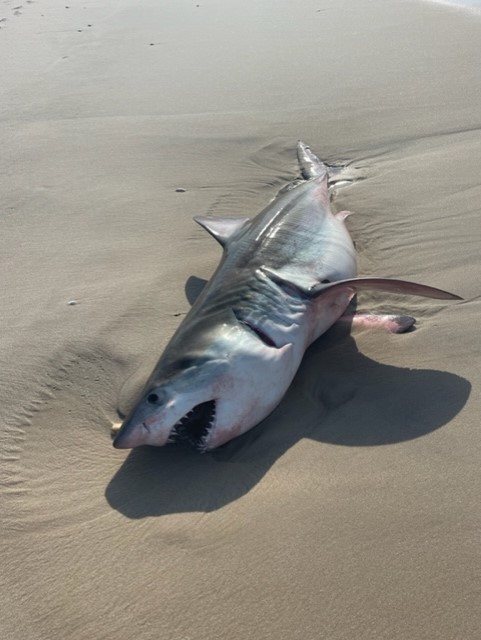
“We have been in contact with the South Fork Natural History Museum Shark Research and Education Program, who are attempting to monitor the situation along with our law enforcement partners,” Lieutenant Daniel Hartman of the Quogue Village Police Department said in a press release last week.
“At this time, we are cautioning swimmers and boaters in the area to be aware of this ongoing situation, and to keep distance to allow law enforcement to monitor this event,” Hartman added.
Great white sharks, which can reach lengths exceeding 20 feet and weigh in at more than 5,000 pounds, are not uncommon in South Fork waters. In 2016, a great white shark nursery, or birthing area, was discovered off Montauk when OCEARCH, a marine science and conservation organization, tagged nine pups there.
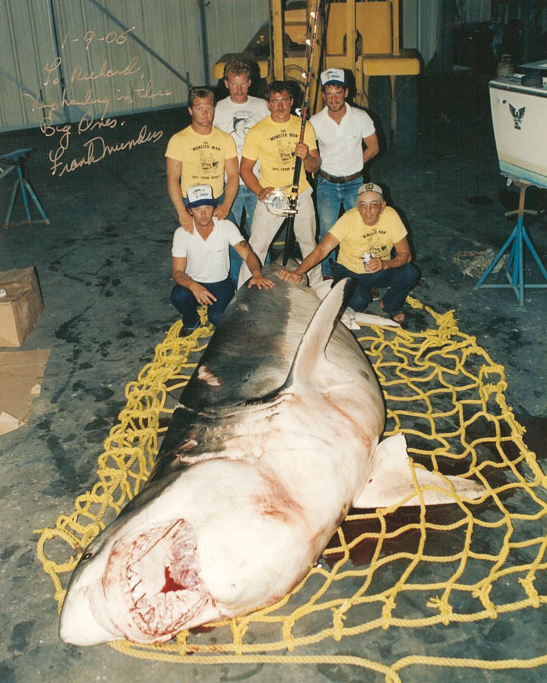
And, of course, world-renowned shark hunter Frank Mundus (often credited as the inspiration for Quint in Jaws) famously caught an unbelievably huge great white weighing 3,427 pounds off Montauk in 1986.
A replica of it still hangs at the Star Island Yacht Club docks in Montauk, and the massive head of another Mundus great white conquest, weighing in at 4,500 pounds (when it had a body) hangs at Salivar’s on The End.
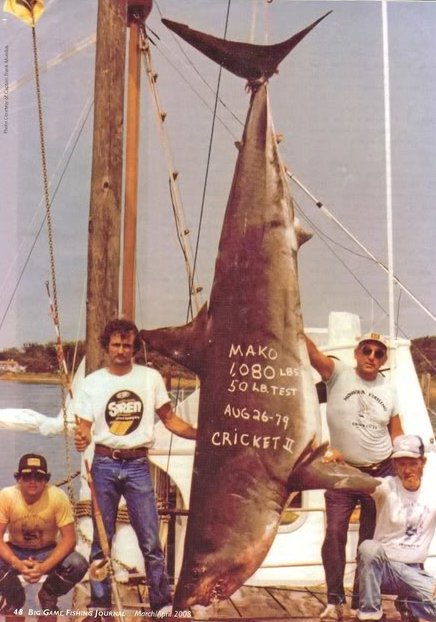
These are the sharks that Quint warned “will swallow you whole” in East Hampton director Steven Spielberg’s Oscar-winning, 1975 classic that still inspires grown adults to think twice before stepping into the surf. Many also attribute Jaws with the increased killing of sharks out of fear following the film’s release.
None of this summer’s attacks were said to be from a great white, but the Quogue shark isn’t the only of its species to be spotted.
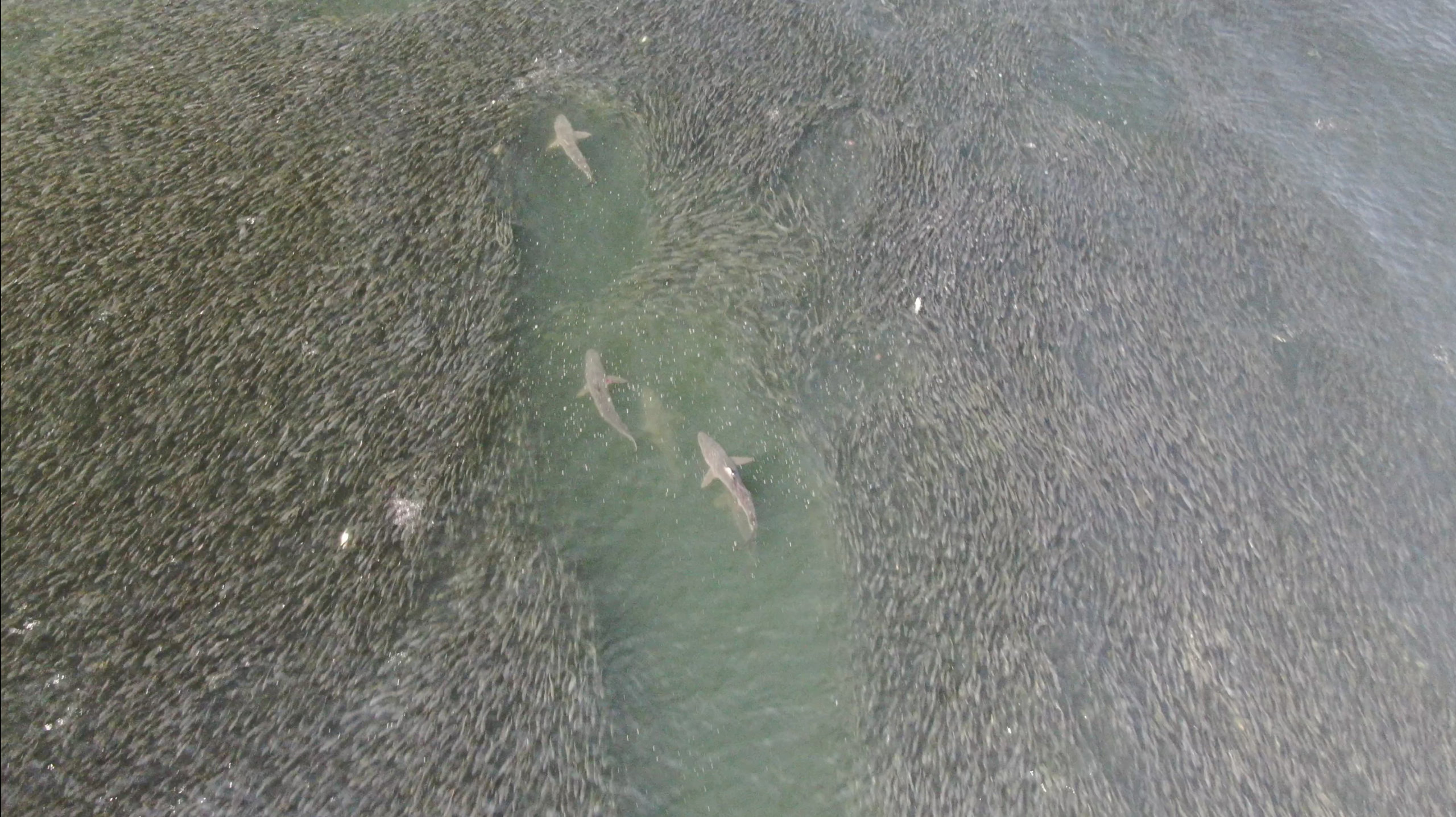
SHARKS SEEN FROM ABOVE
Local videographer and drone pilot Tim Regan, known on Instagram and YouTube as South Fork Salt, captured footage last Wednesday of a young, very much alive great white feeding on menhaden — baitfish (known colloquially as bunker) that travel in schools of thousands — just 200 yards off Mecox Beach in Bridgehampton.
“I could see that shark fin and I saw the forked tail, and I said, ‘Oh man, this is a great white,’” Regan says, adding that it was the first great white he’d ever documented with his drone, which he has used to film all kinds of marine creatures, including whales, rays and dozens of other sharks, anywhere from 50 to 200 yards out from area beaches.
Last summer, many were shocked to learn so many sharks were swimming near the Hamptons’ public beaches after Dan’s shared one of Regan’s videos showing a group of sharks feeding on bunker offshore in Bridgehampton.
Regan says he’s also filmed several tremendous bluefin tuna this summer, which can look like sharks to those who aren’t familiar with the hallmarks of each species.
“It’s been pretty crazy how much I’m seeing them and how close they are to the beach. It’s not like a surfcaster can reach the ones I’m seeing, but it’s nuts,” he adds, pointing out, “When I saw the white shark it was feeding along with these bluefin tuna … You can kind of get an idea that the tuna are way bigger than the shark. I think the biggest one I was estimating was twice as big as that shark — it’s pretty crazy, it’s a huge fish.”
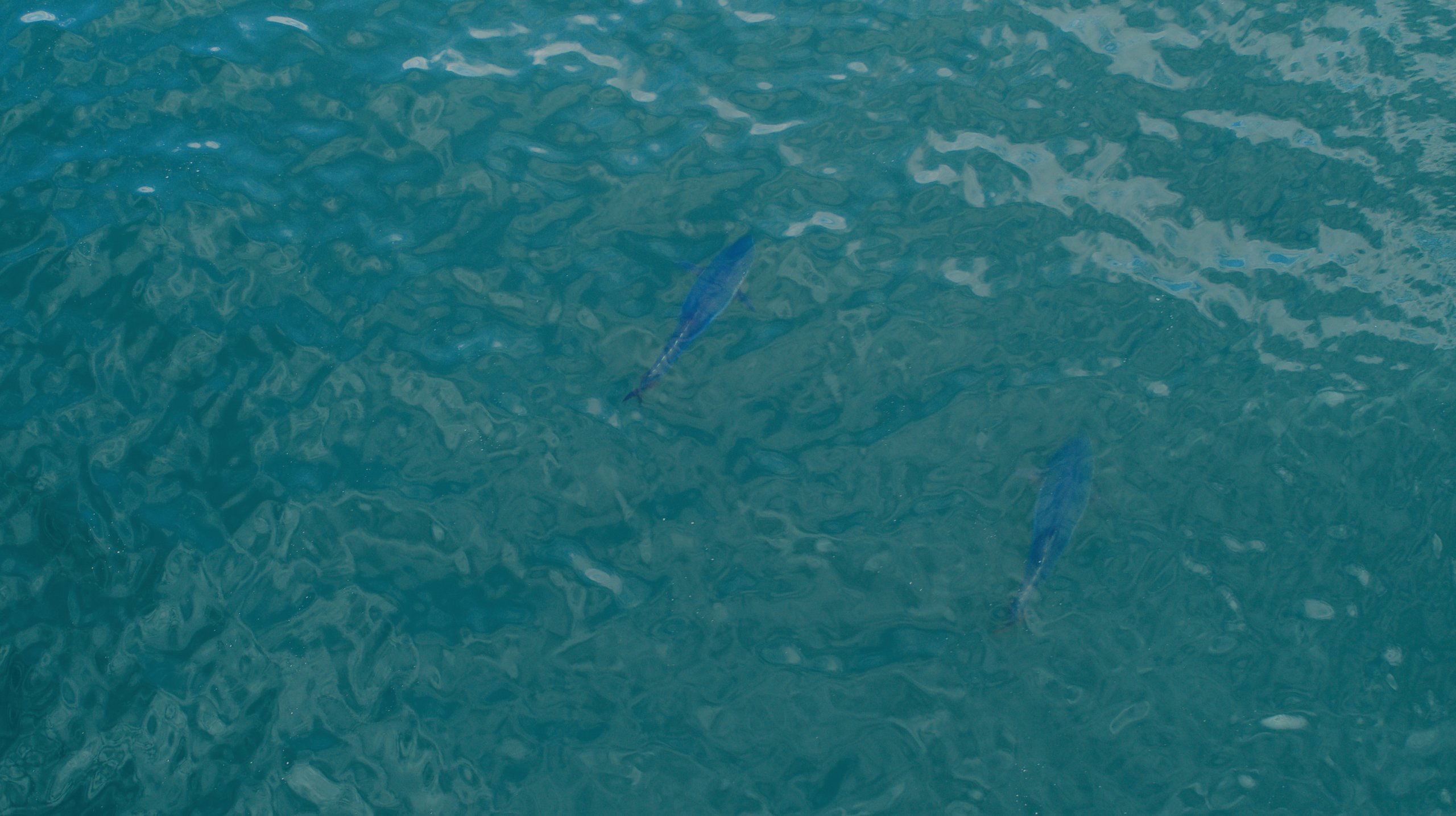
He explains that the white shark in his footage is a juvenile, positively identified by an expert.
“If you watch it in 4K (resolution), you can see a fish hanging out from both sides of its mouth, so that’s probably like a foot-long bunker, which means the shark isn’t very long either,” Regan says, noting that the great white was likely less than 8 feet long, while the bluefin tuna were much larger.
Both species are hard to find, so Regan, who does not claim to be an expert, says it’s difficult to say whether or not his footage means more great whites are out there this year. “It’s very possible there are a lot out there and they’re just very elusive creatures,” he says, adding later, “It would make sense that, as apex predators they live in the murk and use it to their advantage.”

GOVERNMENT RESPONSE
Following the shark attacks, Gov. Kathy Hochul directed state agencies to heighten shark surveillance over the ocean at Long Island state parks, including Hither Hills in Montauk, which will get its first drone on duty, while Jones Beach gets two more drones, and Robert Moses on Fire Island gets a second drone.
Additional lifeguards were also added at each field to keep an eye out for marine wildlife. When a shark is spotted, red flags will go up on the beach, indicating that swimming is prohibited for at least an hour under New York State guidelines while drones, helicopters, and boats are deployed to scan the area.
The state is working to build public awareness about shark safety information, such as avoiding areas with seals, baitfish or people fishing; staying out of murky water; not swimming at dawn, dusk or at night when sharks feed; and remaining in water where your feet can touch the sand. This and other information — like how to distinguish shark fins from dolphins and sunfish (aka mola mola) — is available at dec.ny.gov.
“As New Yorkers and visitors alike head to our beautiful Long Island beaches to enjoy the summer, our top priority is their safety,” Hochul said in a prepared statement. “We are taking action to expand patrols for sharks and protect beachgoers from potentially dangerous situations. I encourage all New Yorkers to listen to local authorities and take precautions to help ensure safe and responsible beach trips this summer.”
Suffolk County is also increasing vigilance in the face of the shark problem, adding shark patrols on wave runners, paddleboards and drones with infrared technology along its South Shore, according to Suffolk County Executive Steve Bellone who spoke on Fox News Friday morning.
“This is really unprecedented,” Bellone said on the television program. “There have been a lot of theories about what is causing it — people talk about water quality improving, climate change — but our lifeguards anecdotally have reported that they’ve seen a huge increase in the amount of bunker fish, and sharks are obviously attracted to that food source.”
Bellone said attendance is still strong at local beaches and with “the best trained lifeguards anywhere” and these increased patrols, “people should feel safe.”
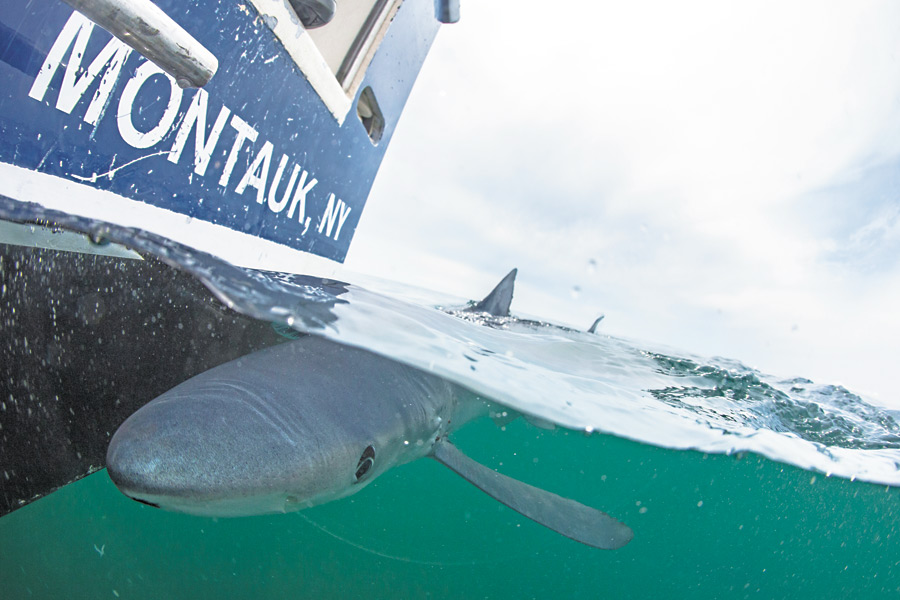
THE TRUTH ABOUT SHARKS
Experts say sharks typically do not attack humans without provocation, and when they do, it’s usually caused by mistaken identity or fear.
According to the Save Our Seas Foundation, most deadly attacks come down to a handful of species and occur when the shark mistakes a human for prey, like a seal, or when a person is in areas with low visibility or in the midst of a school of fish where sharks are feeding.
Sharks do not feed on people, explains Save Our Seas Foundation project leader Dr. Alison Kock on saveourseas.com. But Dr. Kock says some sharks will bite out of curiosity or to “taste test” what’s in front of them.
Unfortunately, even if a shark lets go once they understand they are biting something they don’t want to eat, the damage has already been done. And, in the case of large sharks, that damage and the resulting blood loss could be deadly.
There were just 47 unprovoked shark attacks in the U.S. reported in 2021, according to the Florida Museum of Natural History’s International Shark Attack File. Only one was fatal and none of the attacks were in New York State.
This summer is a marked increase when compared to zero in the state last year, but the numbers must be kept in perspective.
Fears may be stoked and swimmers may have to be more careful as shark populations rebound, but the benefits to the ocean and its ecosystem far outweigh any inconvenience during a Hamptons summer vacation.
It’s imperative that attitudes do not begin to backslide and protections remain in place so sharks and other wildlife can continue to proliferate and balance the food chain.
~ With Briana Bonfiglio



